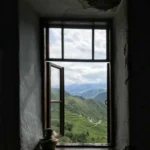Nestled in the heart of Stockholm, Sweden, Gamla Stan offers a truly captivating snapshot of medieval charm and Swedish heritage. Those eager to stroll narrow cobbled streets, gaze at rich ochre buildings, and breathe in centuries-old stories will find this historic island irresistible. Gamla Stan, Stockholm’s Old Town, is not just a site-it’s a journey through time with layers of history, vibrant culture, and hidden corners waiting to be discovered. Whether arriving from Stockholm Central Station, Arlanda Airport, or other parts of the city, visitors can easily access this compact treasure trove of architecture, museums, and culinary delights. For those seeking a stay nearby, a variety of accommodations from quaint guesthouses to modern apartments surround the area, blending convenience with authentic city vibes.
Table of Contents
How to Find Your Way to Gamla Stan
Getting to Gamla Stan is straightforward and pleasant. From Stockholm Central Station, simply take the metro’s red line (Tunnelbana) directly to the Gamla Stan stop-just a few minutes ride away. If you arrive at Arlanda Airport, the Arlanda Express train whisks you to the central station in about 20 minutes, from where the metro or a scenic walk leads to the old town.
For travelers preferring to walk from city center points like Sergels Torg or Kungsträdgården, the journey crosses quaint bridges and waterfront views offering picturesque moments. Buses and ferries also serve Gamla Stan, providing alternatives especially during summer months when the waterways buzz with activity.
Nearby Accommodation and Dining
Staying close to Gamla Stan means waking up amid centuries of history. Neighborhoods just outside the old town host cozy boutique hotels and apartments that combine peaceful nights with quick access to the island’s wonders. Eating here is a delight: quaint cafés serve traditional Swedish fika, while historic taverns offer flavors like herring, meatballs, and saffron buns that echo the city’s culinary heritage.
Unraveling the Layers of Gamla Stan’s History
Gamla Stan is not merely picturesque-it’s a living museum of Swedish history. Founded in the 13th century, this island was the original nucleus around which Stockholm grew. The name “Gamla Stan” literally means “Old Town,” reflecting its role as the city’s medieval heart. Narrow streets wind between well-preserved buildings dating back hundreds of years, many of which have witnessed pivotal moments in Swedish royal and civic life.
The imposing Royal Palace, one of Europe’s largest, dominates the skyline here. Its walls echo tales of kings, queens, and state ceremonies. Nearby, the majestic Storkyrkan Cathedral has hosted coronations and royal weddings, standing as a testament to Sweden’s religious heritage.
Quirky historical facts abound. For instance, the iconic “Mårten Trotzig’s Alley” is Sweden’s narrowest street, measuring just 90 centimeters wide at its tightest point. Walking through this passage invites one to imagine the bustling medieval trade activity once filling these lanes with merchants and craftsmen.
Best Times and Days to Visit Gamla Stan
Timing your visit enhances the magic of Gamla Stan. Early mornings on weekdays often find the streets quieter, perfect for undisturbed wandering and photography. Spring and early autumn bring crisp air and fewer tourists, allowing one to feel the genuine rhythm of local life. Summer, while busy, bursts with festivals and outdoor markets that celebrate Stockholm’s folk music traditions and craft heritage-adding a lively soundtrack to your strolls.
After enjoying the medieval charm of Gamla Stan, some travelers choose to enrich their trip by visiting Dubrovnik’s ancient city walls and vibrant streets, another remarkable European old town steeped in history and culture.
Winter invites a different charm: candle-lit windows, historic Christmas markets, and the aroma of glögg (mulled wine) filling the air. Avoiding midday weekends is wise to skip crowds, especially at popular landmarks like the Royal Palace.
Reserve Your Spot: Tours and Entry Tips
Some of Gamla Stan’s key attractions recommend or require advance reservations. The Royal Palace offers guided tours revealing royal apartments, the treasury, and the armory, often selling out in peak seasons. Booking online helps ensure you don’t miss these immersive experiences.
Walking tours themed around medieval architecture, historic trade routes, or local craft traditions add depth to your visit. Many guides also include visits to the Nobel Museum or insightful stops at heritage museums focusing on Sweden’s coastal legacy.
For those preferring self-guided adventures, downloadable apps and local brochures provide rich context to enhance every alley and square you explore.
If you find Stockholm’s old town charming, the gentle pace and riverside beauty of Bratislava’s Old Town offers a soothing next step for your travels.
Delightful Corners and Local Secrets
Beyond the well-trodden paths, Gamla Stan hides small museums and artisan shops preserving ceramics and textiles traditions, an often-overlooked window into Sweden’s craft heritage. One can also find quiet courtyards once belonging to guilds and merchants who shaped the city’s early economy.
For those fascinated by ritual festivals, check the local calendar for midsummer celebrations or Lucia processions that light up the old town with music and tradition. These moments invite visitors not just to see, but to participate in Stockholm’s cultural heartbeat.
Official Information and Further Planning
For the latest news on exhibitions, guided tours, and practical visitor information, the official Gamla Stan website is an excellent resource. Here, travelers find updated opening hours, event schedules, and ticketing options, all designed to help tailor your visit.
Access the official site for Gamla Stan Visitor Information.

Eastern Europe travel specialist uncovering hidden gems from the Baltics to the Balkans.
- Gamla stan September 2014 01 by Arild Vågen on Wikimedia Commons – cc by-sa 4.0
